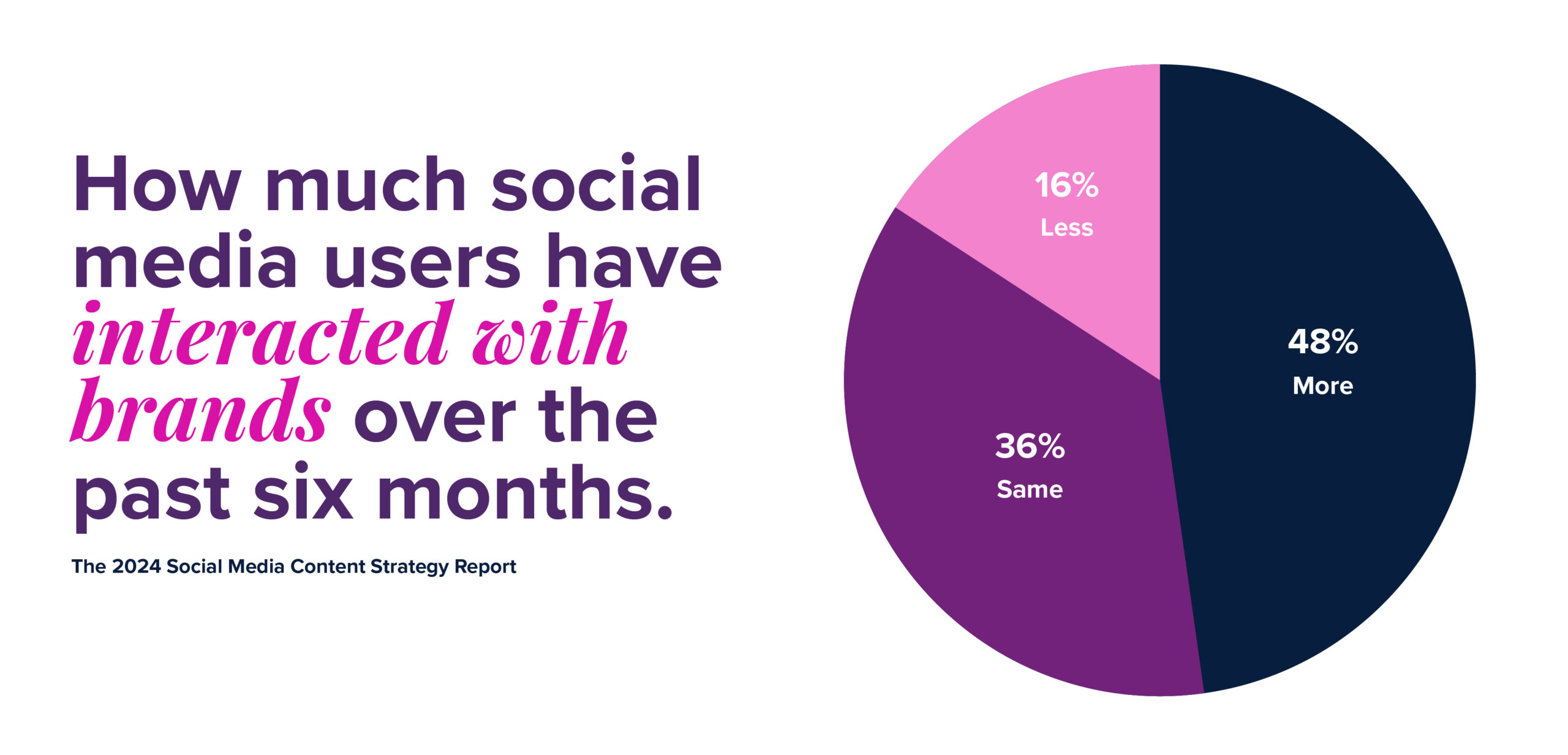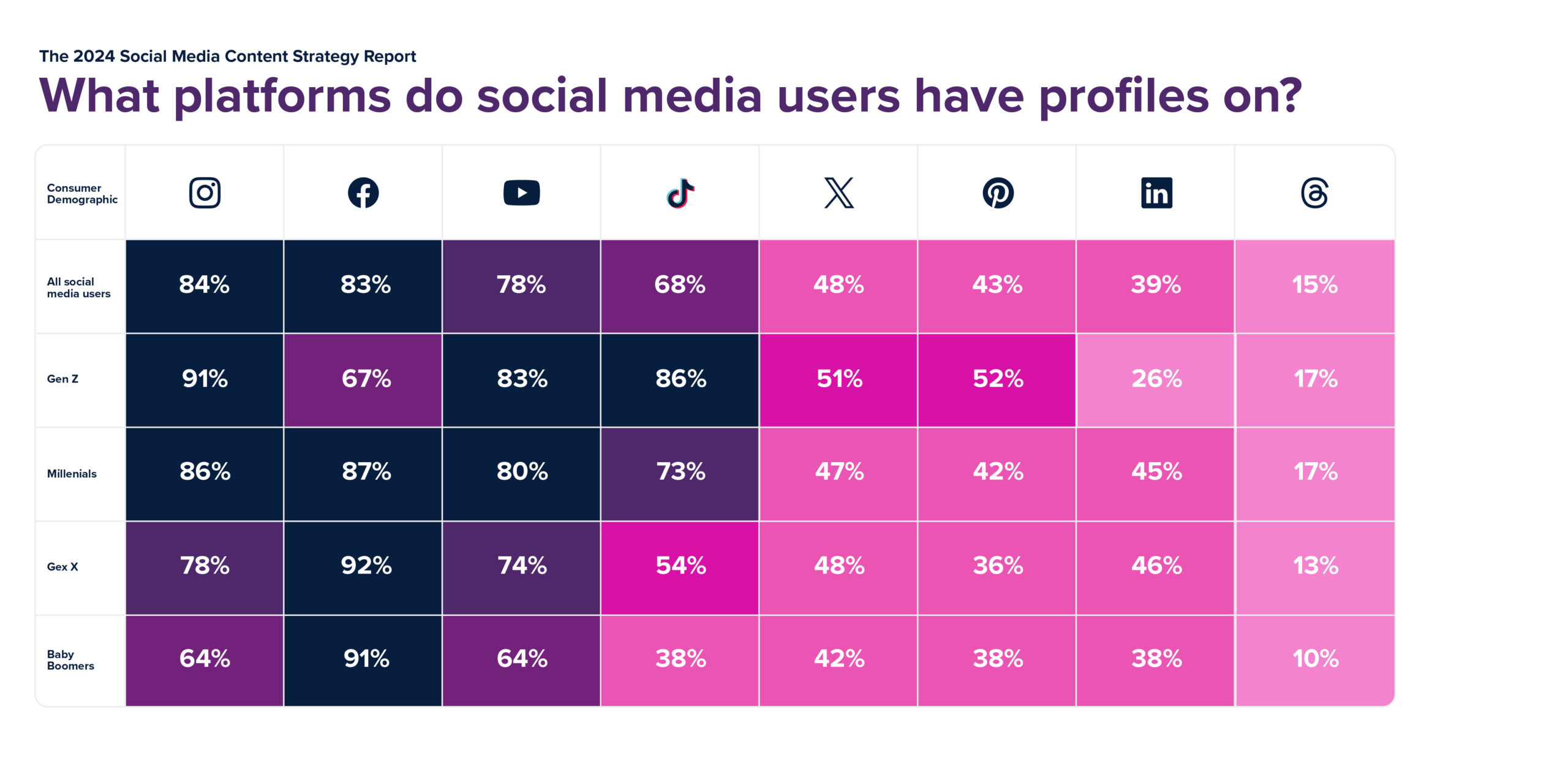
![]()
Social media is not dead; it never was. Consumers are more connected to brands than ever before and want to interact with branded content despite the dramatic rise in social content and hyper-personalized algorithms.
If you’re not quite convinced, a quick reference to Sprout Social’s 2024 Media Content Strategy Report tells us that 48% of consumers admit to interacting with brands more in the last six months, while 36% report the same level of engagement. Only 16% say they’ve engaged less.
So yes, success on organic social media may be harder to achieve now than five years ago, thanks to reduced organic reach, increased competition, and fragmented audiences. But it’s far from dead.

The Long Game
Success today has required a significant shift in mindset. Gone are the days when brands could lead with product-focused, sales-heavy messages or simply repurpose ad campaigns for every platform (cue the “gasp” GIF).

Instead, brands need to focus on sparking conversations, connecting on a human level, consumer discovery, and, yes—sometimes, being the source of a good laugh to break up a user’s day.
“We reject the notion of flooding the socials to sell the last few tickets to an event or increase sales numbers to meet a monthly goal. Like it or not, that isn’t what organic is about any longer. Doing so only alienates, annoys, and reminds your audience that brands are only in it for the transaction.” - Andrew Ketterer, Director of Social Media
Instead, it’s about brand loyalty, which isn’t gained by a fleeting viral post or one trendy video. It’s earned over time with consistency, transparency, and authenticity.
Some brands and agencies will continue bashing their heads into a brick wall, but we’re building brands (and communities) using a refreshed approach.
Understand the Assignment
Social platforms are driven by both content and community. Brands must realize that value lies not only in what they post but in how they engage. It’s about building long-term relationships and participating in real conversations, not just pushing offerings. If there’s no alignment on that, moving any piece of content across the finish line will be challenging.
In short, every post needs a why. And if you haven’t gotten the hint yet, users don’t want to hear anything about sales.
Know Who’s Listening
Understanding your audience is the foundation of any successful social presence. Long-term relationships are built by creating communities that resonate with their specific interests, preferences, and behaviors. Dive deep into why they’re on social and where they’re interacting. Find out what brands they’re following, which celebrities or athletes they’re keeping tabs on, what memes they’re sharing with friends, and what makes them comment, and don’t overlook what they’re posting on their feeds.
This should guide everything done on your social channels.
The Right Platforms
The myth that brands need to be active on every social platform is wrong; we’d even say it’s dangerous. Remember when everything had a microsite? It's the same situation on social media. We talk to brands every month who wish they hadn’t committed to an array of platforms and are now trying to carve out a path to cut back without upsetting the communities they’ve built.

In today’s reality, brands should focus on platforms that meet two key criteria:
Community Fit: The platform should have an active community relevant to the brand’s product or service.
Content Compatibility: The platform must support content the brand can produce consistently and in a way that engages the specific audience.
Each platform has a distinct and specific culture. There are even subcultures on each platform that should also be considered. Being the loudest account in the room isn’t a good thing anymore. Fail to fit into the culture, and you risk being the social media equivalent of the lone, forgotten lunch companion speaking to no one.. Hello, Steven Glansberg.

Why Should People Care?
Stop leading with your products and services. Brands need to start asking why people would engage with their content and what would make them opt into receiving consistent content in their feeds.
Consumers engage for a variety of reasons. Some audiences prefer discovery and entertainment, while others prefer education or humor. The more precise a brand’s reason to believe, the more people will engage. And when people engage, the content strategy will become more focused, effective, and repeatable. Consistency is a major part of organic success in today’s world.
Once you’ve developed your brand’s reason to engage, consistently ask yourself if the content accomplishes what you’ve set out to do. Gut-checking against this point will build more consistent interactions.
Create For Your Community
Creating content for a community’s benefit instead of promoting a product or service can be a liberating shift in mindset. There’s an acquired comfort in not always leading the conversation but sometimes just being part of it. Of course, this means being humble enough to know you aren’t steering the ship.
“Anyone who tells you they’re ‘ahead of the trends’ or ‘creating viral moments’ is full of it. Brands don’t decide what’s trending; people do. It’s up to brands to tap into those unpredictable and spontaneous cultural events to be part of the moment while staying true to the brand and its existing community.” - Andrew Ketterer, Director of Social Media

Example 1 - Lego Example 2 - Liquid Death Example 3 - NatGeo
For these reasons, we launched Reactr—a new social-first content lab offering quick-twitch creation for brands at the speed needed to be relevant today. Reactr specializes in engaging and share-worthy content on quick turnarounds, forgoing long lead times and full-scale production resources in favor of quick, authentic, and repeatable content capture.
Summary
Organic social media is only dead for brands that have failed to adapt to its role for consumers. When executed properly, it presents enormous opportunities for brands to strengthen brand loyalty and impact perception within online communities. The key is playing the long game, staying creative, prioritizing consistency, and being willing to accept you don’t always have to be the center of attention to be successful
Want to take your social media strategy or content efforts to the next level? Click here, and let’s spark something real.




